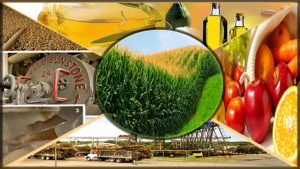After discovery of chitin in 1811 by Henri Braconnot a naturalist of France, Professor C. Rouget was first scientist who discovered chitosan in 1859. But during 1930 and 1940, the polymers became popular. Owing to lack of manufacturing techniques, its production for competition with synthetic polymers was too low at commercial level. So its commercial production starts at 1970. It is used in industry, medicines and agriculture etc. According to Environmental Protection Agency and United States Department of Agriculture, it can be use in organic farming.
As chitosan is derived from chitin so was given its name chitosan. “Chitin” is a Greek word that means “a coat of mail” a kind of armor. Prof Henri Braconnot was first scientist who discovered chitin in mushrooms in 1811. In 1830, it was found in exoskeleton of insects and was named chitin. Chitosan is produced by deacetylation of chitosan. It means we remove the –COOH group from the chitin by some alkaline agents e.g. NaOH. Effectiveness of this polymer is based on its degree of deacetylation. Chitin is present in cell wall of fungi and exoskeleton/shells of crustaceans like lobster, crap, shrimp and some kinds of krill. It is also present in exoskeleton of insects. Chitosan is naturally exists as decomposed molecules of chitin in soil and water.
Chitosan belongs to group of linear polysaccharide. It is a polymer which consists of β-(1-4)-linked D-glucosamine (deacetylated part) and N-acetyl-D-glucosamine (acetylated part). Chitosan is primarily made by the deacetylation of chitin oligosaccharides by the enzyme deacetylase. It is water soluble. Chitosan is plant growth enhancer being used basically as a natural seed treatment. It is an environmental friendly so is a good bio-pesticide. Among biodegradable materials in the world it is present in large amount. There are different kinds of chitosan in market. These types are on the bases of its molecular weight like low, medium and high. Alpha and beta types are also present.
Chitosan is a bio-pesticide as it is very effective in alleviation of biotic stress. It is use as antifungal, antimicrobial and antibacterial agent. It boosts up the innate ability of the plants to fight against natural enemies. Chitosan is very effective in abiotic stress too. It is very effective in alleviation of heat stress drought stress and salt stress. In some crops it is very useful in lowering down transpiration so saving water loss from aerial parts of plants in drought condition when applied exogenously.
Its foliar application leads to higher vegetative growth. It can also cause improvement in fruit quality in some plants. It stabilizes cell membranes through increasing antioxidants. It saves cell membranes commencing oxidative stress and improves plant cell structure and permeability. So, protection against oxidative stress takes place. Decreased lipid peroxidation by stimulating antioxidant enzymes had led to decreased membrane permeability and improved cell functions significantly. It is due to application of chitosan. These results have been confirmed by different reports. It is found very useful in increasing the post-harvest life of fruits and cut flowers.
There is dire need to get benefit from this useful chemical. In Pakistan we have to work on the deacetylation of chitin to get this polymer because its deacetylation is tough process. Recently in Pakistan research has been started on this polymer in soil science and horticulture institutes at university of agriculture Faisalabad. Now a day’s this unique polymer or its derivatives are about two thousand applications. We are totally importing this chemical so if we develop our industry in Karachi we can get this chemical commercially from marine life.
By
Mujahid Ali1, Dr. C.M. Ayyub1, Dr. Abdul Manan2 and Dr. H. Nazar Faried3
1IHS (UAF), 2Ghazi University (DGK), 3MNS University of Agriculture (Multan)








